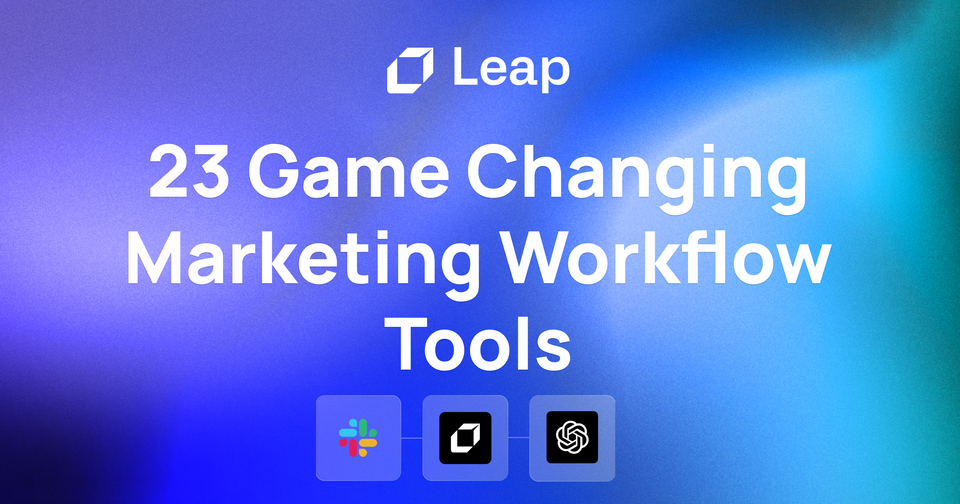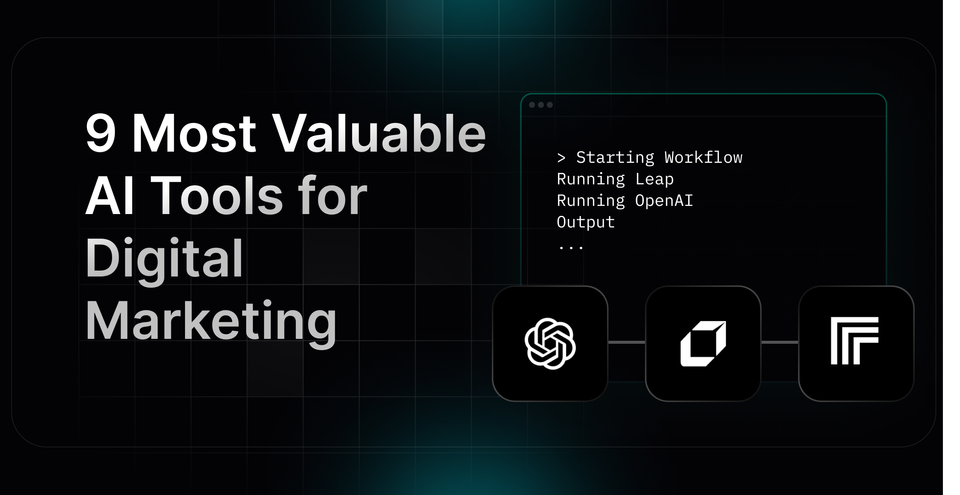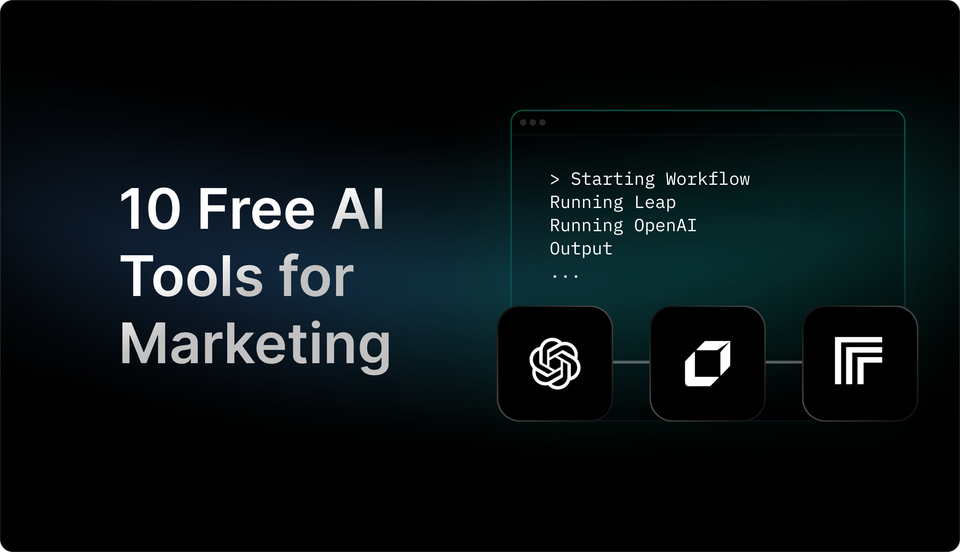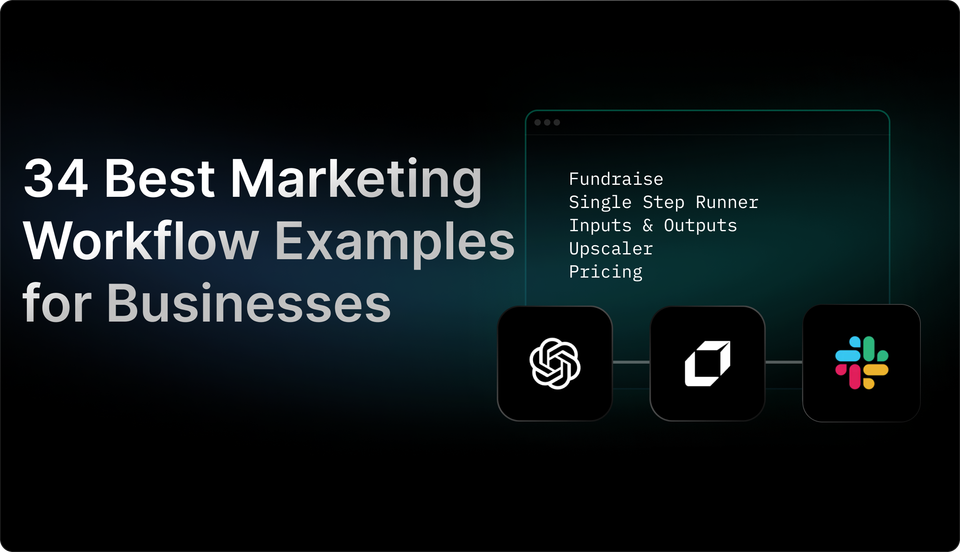17 Game Changing Digital Marketing Workflow Examples
Optimize success with a seamless digital marketing workflow. Elevate strategies, enhance collaboration, and drive results efficiently.

A well-crafted digital marketing workflow is the key to building a successful online presence. From strategizing and planning to execution and analysis, a seamless marketing workflow is the backbone of any effective digital marketing campaign. But what exactly is a digital marketing workflow, and how can it help you achieve your marketing goals? That's what we'll explore in this blog.

What is a Digital Marketing Workflow?

Having a well-defined workflow is crucial for success. A digital marketing workflow is a step-by-step process that outlines the tasks, activities, and tools required to achieve marketing goals and objectives in the online realm. It serves as a roadmap, guiding marketers through the various stages of planning, executing, measuring, and optimizing their digital marketing campaigns.
1. Planning and Strategy: Laying the Foundation for Success
Before diving into any marketing campaign, it is essential to lay the groundwork through careful planning and strategizing. This initial stage involves conducting market research, defining target audiences, setting measurable goals, and outlining the key performance indicators (KPIs) that will be used to track success. By establishing a clear direction and understanding the audience's needs and preferences, marketers can ensure that their efforts will be targeted and impactful.
2. Content Creation: Crafting Compelling Messages
Content is the backbone of any digital marketing campaign. This stage focuses on creating high-quality, engaging, and relevant content that resonates with the target audience. It includes developing blog posts, social media updates, videos, infographics, and other forms of content that align with the campaign's objectives. Content creation also involves optimizing content for search engines and ensuring it is shareable across various platforms.
3. Campaign Execution: Bringing the Plan to Life
Once the content is ready, it's time to execute the campaign. This stage involves implementing various marketing tactics, such as search engine optimization (SEO), paid advertising, email marketing, social media management, and more. Marketers leverage different channels and platforms to connect with their target audience, raise brand awareness, drive website traffic, and generate leads or conversions.
4. Performance Measurement: Monitoring and Analyzing Results
To gauge the effectiveness of a digital marketing campaign, it is crucial to collect data and analyze performance metrics. This stage involves monitoring key metrics, such as website traffic, conversion rates, engagement levels, and return on investment (ROI). Marketers use various analytics tools to track these metrics, gaining insights into what is working well and identifying areas for improvement.
5. Optimization and Iteration: Continuous Improvement for Better Results
Based on the insights gained from performance measurement, marketers can optimize their campaigns to maximize results. This stage involves making data-driven decisions to refine strategies, improve targeting, adjust messaging, and optimize conversion funnels. By continuously iterating and testing different approaches, marketers can refine their digital marketing efforts, ensuring that they stay relevant and effective in a rapidly evolving digital landscape.
6. Reporting and Communication: Demonstrating Success
The final stage of the digital marketing workflow involves reporting on campaign performance and effectively communicating the results to stakeholders. Marketers compile comprehensive reports that highlight key metrics, achievements, and areas for improvement. These reports help demonstrate the value of digital marketing efforts, inform future strategies, and facilitate communication with team members, clients, or management.
A digital marketing workflow provides structure and organization to navigate the complex world of online marketing. It guides marketers through planning, content creation, campaign execution, performance measurement, optimization, and reporting. By following a well-defined workflow, marketers can streamline their processes, improve productivity, and achieve their marketing objectives in the digital realm.

Related Reading
Benefits of Implementing A Digital Marketing Workflow

Streamlined Process
A digital marketing workflow provides a structured and organized approach to managing marketing campaigns. It helps businesses establish a clear path from planning to execution, ensuring that tasks are completed in a logical sequence. By implementing a digital marketing workflow, businesses can streamline their processes, minimize errors, and increase overall efficiency.
Improved Collaboration
One of the significant benefits of a digital marketing workflow is that it promotes collaboration among team members. With a defined workflow, everyone involved in the marketing process knows their roles, responsibilities, and deadlines. This clarity fosters better communication and collaboration, as team members can work together seamlessly towards the common goal of successful marketing campaigns.
Enhanced Productivity
By implementing a digital marketing workflow, businesses can optimize their productivity levels. A well-defined workflow eliminates ambiguity and confusion, allowing team members to focus on their tasks and complete them efficiently. With clear timelines and priorities, employees can manage their time effectively, resulting in improved productivity and timely delivery of marketing initiatives.
Better Task Management
A digital marketing workflow enables businesses to break down complex marketing projects into manageable tasks. It allows for the creation of task lists, assignment of responsibilities, and setting of deadlines. With this level of task management, businesses can ensure that nothing falls through the cracks and that every aspect of the marketing campaign is adequately addressed.
Effective Resource Allocation
A digital marketing workflow helps businesses allocate their resources effectively. By having a clear understanding of the tasks and timelines involved, businesses can allocate their budget, time, and manpower accordingly. This ensures that resources are utilized efficiently, maximizing the return on investment and minimizing any wastage.
Enhanced Accountability
Implementing a digital marketing workflow promotes accountability within the marketing team. With clearly defined roles and responsibilities, team members know exactly what is expected of them and can be held accountable for their performance. This accountability fosters a sense of ownership and responsibility, leading to increased motivation and improved results.
Increased Agility and Adaptability
Businesses need to be agile and adaptable in their marketing strategies. A digital marketing workflow provides the flexibility to make changes and adjustments as needed. It allows businesses to respond quickly to market trends, customer feedback, and emerging opportunities, ensuring that their marketing campaigns remain relevant and effective.
Implementing a digital marketing workflow offers businesses numerous benefits. It streamlines processes, improves collaboration, enhances productivity, enables better task management, optimizes resource allocation, promotes accountability, and increases agility and adaptability. By utilizing a digital marketing workflow, businesses can effectively plan, execute, and evaluate their marketing initiatives, leading to greater success in the digital landscape.
Related Reading
- Marketing Workflow Management
- Marketing Automation Workflows
- Content Marketing Workflow
- Digital Marketing Agency Workflow
- Digital Marketing Workflows
- Marketing Workflow Examples
17 Game Changing Digital Marketing Workflow Examples

1. SEO Workflow: Optimizing for Organic Search
Step 1: Keyword Research and Analysis
Step 2: On-Page Optimization
Step 3: Off-Page Optimization
Step 4: Technical SEO Audit
Step 5: Link Building Strategy
2. PPC Workflow: Maximizing Paid Advertising ROI
Step 1: Goal Setting and KPI Identification
Step 2: Keyword Research and Selection
Step 3: Ad Creation and Testing
Step 4: Campaign Setup and Targeting
Step 5: Bid Management and Optimization
3. Content Marketing Workflow: Creating Compelling Content
Step 1: Topic Research and Ideation
Step 2: Content Creation and Optimization
Step 3: Content Promotion and Distribution
Step 4: Engagement Tracking and Analysis
Step 5: Repurposing and Updating Content
4. SMM Workflow: Building a Strong Social Media Presence
Step 1: Social Media Strategy Development
Step 2: Content Planning and Creation
Step 3: Social Media Publishing and Scheduling
Step 4: Community Management and Engagement
Step 5: Social Media Analytics and Reporting
5. Email Marketing Workflow: Nurturing and Converting Leads
Step 1: Audience Segmentation and List Building
Step 2: Email Campaign Planning and Automation
Step 3: Content Creation and Personalization
Step 4: A/B Testing and Optimization
Step 5: Performance Tracking and Analysis
6. Affiliate Marketing Workflow: Partnering for Increased Sales
Step 1: Affiliate Network Selection and Setup
Step 2: Affiliate Program Development
Step 3: Affiliate Recruitment and Onboarding
Step 4: Performance Monitoring and Reporting
Step 5: Commission Payout and Relationship Management
7. Influencer Marketing Workflow: Leveraging Influencer Partnerships
Step 1: Identifying Relevant Influencers
Step 2: Outreach and Relationship Building
Step 3: Campaign Planning and Execution
Step 4: Content Review and Approval
Step 5: Performance Tracking and ROI Evaluation
8. Video Marketing Workflow: Engaging Audiences through Visual Content
Step 1: Video Strategy and Goal Setting
Step 2: Script and Storyboard Creation
Step 3: Production and Editing
Step 4: Video Distribution and Promotion
Step 5: Analytics and Optimization
9. Mobile Marketing Workflow: Reaching Users on Mobile Devices
Step 1: Mobile App Development and Optimization
Step 2: SMS and MMS Marketing Campaigns
Step 3: Mobile Advertising and Geotargeting
Step 4: Mobile Wallet and Proximity Marketing
Step 5: Mobile Analytics and Performance Monitoring
10. Native Advertising Workflow: Blending in with Native Content
Step 1: Native Ad Platform Selection
Step 2: Content Creation and Integration
Step 3: Targeting and Placement Optimization
Step 4: Tracking and Conversion Monitoring
Step 5: Campaign Analysis and Reporting
11. Chatbot Marketing Workflow: Automating Customer Interactions
Step 1: Chatbot Development and Integration
Step 2: Conversation Mapping and Flow Design
Step 3: Natural Language Processing and AI Training
Step 4: Chatbot Testing and Deployment
Step 5: Performance Monitoring and Enhancements
12. Podcast Marketing Workflow: Creating Engaging Audio Content
Step 1: Podcast Topic Research and Planning
Step 2: Recording and Editing
Step 3: Podcast Distribution and Syndication
Step 4: Promotion and Guest Outreach
Step 5: Listener Engagement and Feedback Management
13. Social Listening Workflow: Monitoring Brand Mentions
Step 1: Social Media Monitoring Tools Setup
Step 2: Keyword and Hashtag Tracking
Step 3: Sentiment Analysis and Trend Identification
Step 4: Competitor Analysis and Benchmarking
Step 5: Actionable Insights and Response Planning
14. User-generated Content Workflow: Harnessing the Power of Customers
Step 1: UGC Campaign Planning and Execution
Step 2: User Participation and Content Submission
Step 3: Moderation and Content Curation
Step 4: Rights Management and Permissions
Step 5: UGC Amplification and Measurement
15. Customer Journey Mapping Workflow: Understanding User Experiences
Step 1: User Persona Development
Step 2: Touchpoint Identification and Mapping
Step 3: Customer Journey Analysis and Optimization
Step 4: Content Personalization and Recommendations
Step 5: Journey Analytics and Iterative Improvements
16. Marketing Automation Workflow: Streamlining Marketing Processes
Step 1: Automation Platform Selection and Setup
Step 2: Lead Scoring and Segmentation
Step 3: Workflow and Trigger Development
Step 4: Personalization and Dynamic Content
Step 5: Performance Tracking and Automation Iterations
17. Data-driven Decision Making Workflow: Leveraging Analytics
Step 1: Data Collection and Integration
Step 2: Performance Metrics and KPI Definition
Step 3: Data Analysis and Visualization
Step 4: Insights and Actionable Recommendations
Step 5: Continuous Monitoring and Optimization
Common Challenges Faced When Implementing A Digital Marketing Workflow

Aligning marketing goals with business objectives is one of the key challenges faced when implementing a digital marketing workflow. It is essential to ensure that all marketing efforts are in line with the overall objectives of the business. This can be challenging due to miscommunication or lack of clarity between different departments.
To overcome this challenge, it is crucial to establish open and regular communication channels between the marketing team and other departments. This can be achieved through regular meetings, cross-functional collaborations, and setting clear expectations. Using project management tools that allow for easy tracking and sharing of goals can help in aligning marketing efforts with business objectives.
Managing Multiple Channels and Platforms
Digital marketing involves managing multiple channels and platforms, such as social media, email marketing, search engine optimization, and content marketing. Each channel requires a different strategy and approach, which can be overwhelming and time-consuming for marketers.
To overcome this challenge, it is important to prioritize channels based on their relevance and effectiveness for the target audience. Conducting market research and analyzing data can help identify the most impactful channels to focus on. Automation tools can streamline workflows and save time by automating tasks such as social media scheduling and email campaigns.
Coordinating Content Creation and Distribution
Content creation and distribution are vital components of a digital marketing workflow. Coordinating the creation of high-quality content and ensuring its timely distribution across different channels can be challenging.
To overcome this challenge, it is essential to establish a content calendar and workflow that clearly outlines responsibilities, deadlines, and approval processes. Collaboration tools and project management software can help streamline content creation and facilitate effective communication between team members. Regularly reviewing and analyzing the performance of content can provide insights for continuous improvement.
Measuring and Analyzing Performance
Measuring and analyzing the performance of digital marketing campaigns is crucial for determining their effectiveness and making data-driven decisions. It can be challenging to collect and analyze the vast amount of data generated by various channels and platforms.
To overcome this challenge, it is important to define key performance indicators (KPIs) that align with business objectives and track them consistently. Utilizing analytics tools and dashboards can help consolidate data from different sources and provide actionable insights. Regularly reviewing and analyzing performance metrics can enable marketers to optimize their strategies and allocate resources more effectively.
Adapting to Constantly Evolving Technologies
The digital marketing landscape is constantly evolving, with new technologies and platforms emerging regularly. Keeping up with these changes and adapting marketing strategies accordingly can be a significant challenge.
To overcome this challenge, it is important for marketers to stay updated on industry trends and be willing to embrace new technologies and tools. Investing in continuous learning and professional development can help marketers stay ahead of the curve. Building a culture of innovation and experimentation within the team can foster adaptability and encourage the exploration of new marketing approaches.
Ensuring Collaboration and Communication
Effective collaboration and communication are essential for a successful digital marketing workflow. Coordinating efforts and ensuring clear communication between team members, departments, and external stakeholders can be challenging.
To overcome this challenge, it is important to establish clear communication channels and protocols. Regular team meetings, project management tools, and collaboration platforms can facilitate seamless communication and ensure that everyone is on the same page. Encouraging open and transparent communication among team members can foster a collaborative environment and improve overall workflow efficiency.
Managing Budget and Resources
Digital marketing campaigns often require significant investment in terms of budget and resources. Managing these resources efficiently and ensuring their optimal allocation can be a complex challenge.
To overcome this challenge, it is important to establish a budget allocation framework that aligns with business objectives and ROI expectations. Regularly reviewing and analyzing campaign performance can help identify areas of improvement and optimize resource allocation. Leveraging automation tools and outsourcing certain tasks can help streamline workflows and reduce costs.By addressing these common challenges and implementing effective strategies and processes, businesses can overcome obstacles and achieve a streamlined and efficient digital marketing workflow.
How Digital Marketing Workflows Can Be Optimized With No-Code Tools

Digital marketing workflows involve a series of tasks and processes aimed at achieving marketing goals through online channels. By optimizing and automating these workflows, marketers can streamline their operations, increase efficiency, and save valuable time. No-code tools offer a convenient and accessible way to achieve these optimization and automation goals, without the need for coding skills. We will explore how digital marketing workflows can be optimized and automated using no-code tools.
1. Centralized Task Management
One key aspect of optimizing digital marketing workflows is centralizing task management. By using no-code tools, marketers can create centralized dashboards that allow them to assign tasks, track progress, and collaborate with team members in real-time. This eliminates the need for constant email exchanges and ensures that everyone is on the same page.
2. Automated Data Collection and Analysis
Data is crucial for effective digital marketing decision-making. No-code tools can automate the collection and analysis of data from various sources, such as social media platforms, website analytics, and customer relationship management systems. By setting up automated data pipelines, marketers can gather valuable insights without manually extracting and analyzing data, saving significant time and effort.
3. Personalized Customer Journey
No-code tools enable marketers to create personalized customer journeys without relying on complex coding. By using visual interfaces and pre-built automation templates, marketers can segment their audience, trigger personalized messages, and deliver tailored content at each stage of the customer journey. This leads to improved customer experiences and higher conversion rates.
4. Workflow Integration
Integrating different tools and platforms is crucial for optimizing digital marketing workflows. No-code tools often come with pre-built integrations for popular marketing platforms, allowing marketers to connect their tools seamlessly and automate data transfer between them. This integration eliminates the need for manual data entry and ensures that information flows smoothly across the workflow.
5. Social Media Scheduling and Automation
Social media marketing is a vital component of digital marketing strategies. No-code tools offer features that allow marketers to schedule posts, automate social media publishing, and track engagement metrics. By automating these tasks, marketers can maintain a consistent social media presence, engage with their audience effectively, and analyze the performance of their social media campaigns.
6. Email Marketing Automation
Email marketing remains a powerful tool for reaching and engaging with customers. No-code tools provide intuitive interfaces for designing and automating email marketing campaigns. Marketers can create email sequences, set triggers based on user behavior, and segment their email lists for targeted messaging. Email marketing automation saves time, ensures consistent communication, and enables marketers to nurture leads effectively.
7. Performance Tracking and Reporting
Measuring the effectiveness of digital marketing efforts is crucial for optimizing future strategies. No-code tools offer built-in reporting and analytics capabilities, allowing marketers to track key performance metrics, generate customized reports, and visualize data in a digestible format. By automating reporting processes, marketers can focus on analyzing data and making informed decisions, rather than spending time on manual report creation.
Optimizing and automating digital marketing workflows using no-code tools can significantly improve efficiency, streamline processes, and enhance marketing outcomes. By centralizing task management, automating data collection and analysis, personalizing customer journeys, integrating workflows, automating social media and email marketing, and tracking performance, marketers can free up valuable time and resources to focus on strategy and creativity. No-code tools offer a user-friendly and accessible way to achieve these optimization and automation goals, empowering marketers to drive better results in the digital marketing landscape.
Create Game Changing Automations Today With Leap’s AI Workflows
Streamlining your digital marketing workflow is essential for staying productive and maximizing your results. With the advent of AI technology, automating various tasks can significantly enhance your efficiency and effectiveness. Leap Workflows is an innovative tool that harnesses the power of AI to supercharge your digital marketing efforts, enabling you to achieve more with less effort.
1. What is Leap Workflows?
Leap Workflows is an AI-powered automation tool that empowers you to automate your work using custom AI automations. With seamless integrations with popular platforms like Zapier and Vercel, Leap Workflows allows you to connect the tools you love and create sophisticated AI automations without any coding. By leveraging the capabilities of OpenAI, Microsoft, and other leading AI providers, Leap Workflows enables you to supercharge your existing tools and enhance your digital marketing workflow.
2. How can Leap Workflows enhance your digital marketing workflow?
Leap Workflows offers a wide range of AI-powered features that can revolutionize your digital marketing workflow. Here are just a few examples:
Summarizing Documents
With Leap Workflows, you can quickly summarize lengthy documents, saving you time and effort. Whether you need to review reports, articles, or research papers, Leap's AI models can condense the information into concise summaries, allowing you to extract key insights effortlessly.
Voice Translation
In today's global marketplace, reaching a diverse audience is crucial for digital marketers. Leap Workflows enables you to translate your voice recordings into multiple languages, breaking down language barriers and expanding your reach. Whether you're creating podcasts, videos, or webinars, Leap's AI-powered voice translation feature ensures that your content resonates with a global audience.
AI Call Transcription
Analyzing customer conversations is vital for refining your marketing strategies. Leap Workflows automates the transcription of your sales and customer service calls, allowing you to extract valuable insights and identify patterns. By leveraging AI call transcription, you can optimize your marketing campaigns, enhance customer experiences, and drive better results.
AI Avatar and Asset Generation
Visual content plays a crucial role in digital marketing. Leap Workflows offers AI-powered avatar and asset generation, allowing you to create stunning visuals without the need for design skills. Whether you need captivating social media graphics, eye-catching banners, or engaging infographics, Leap's AI models can generate visually appealing assets tailored to your brand.
SEO Automation
Effective search engine optimization (SEO) is essential for driving organic traffic to your website. Leap Workflows simplifies the SEO process by automating keyword research, content optimization, and link building. By leveraging AI algorithms, Leap helps you identify high-performing keywords, optimize your site for search engines, and boost your organic visibility.
3. How to get started with Leap Workflows?
Getting started with Leap Workflows is easy. Simply sign up for a free account and start exploring the vast array of AI-powered features. With no coding required, you can quickly create custom workflows that automate your digital marketing tasks. Whether you're a solopreneur, a small business owner, or part of a marketing team, Leap Workflows can revolutionize your productivity and help you achieve more.
Leap Workflows is a game-changer for automating your digital marketing workflow. By leveraging the power of AI, you can streamline your tasks, save time, and achieve better results. Try Leap's Workflows tool for free today and unlock the endless opportunities for automation in your digital marketing journey.




